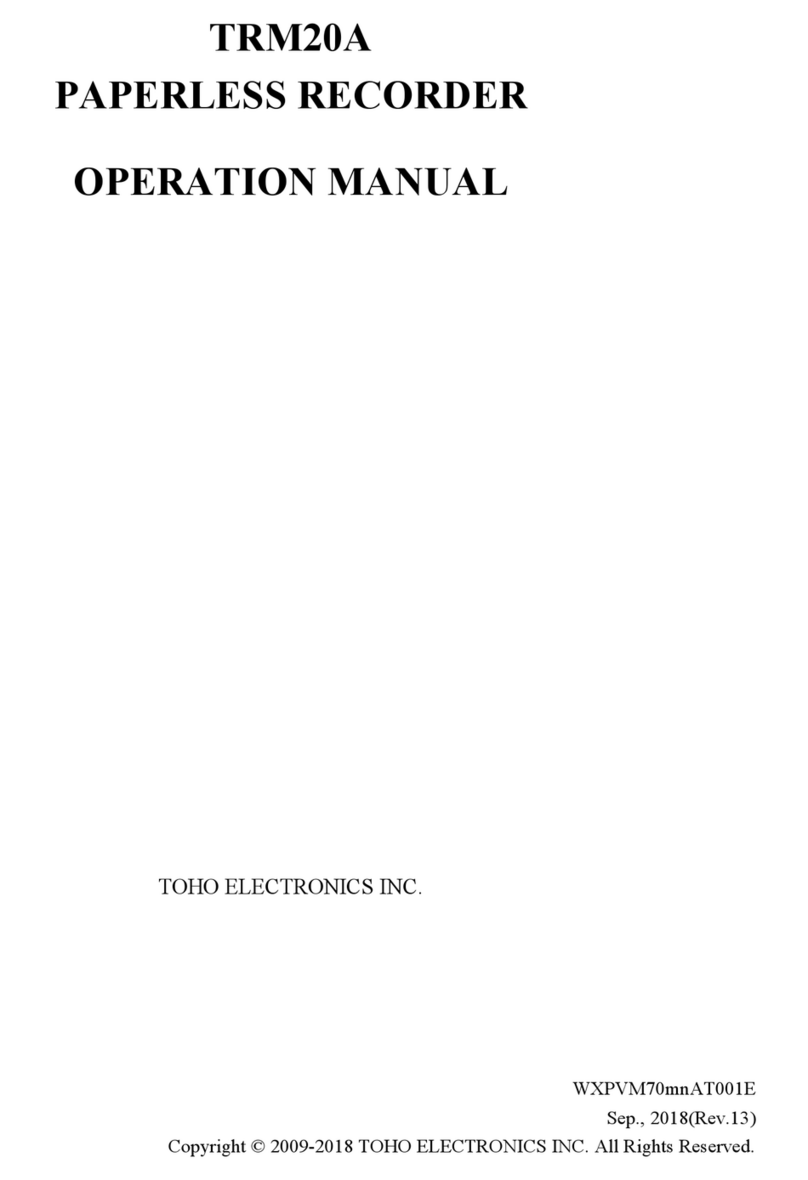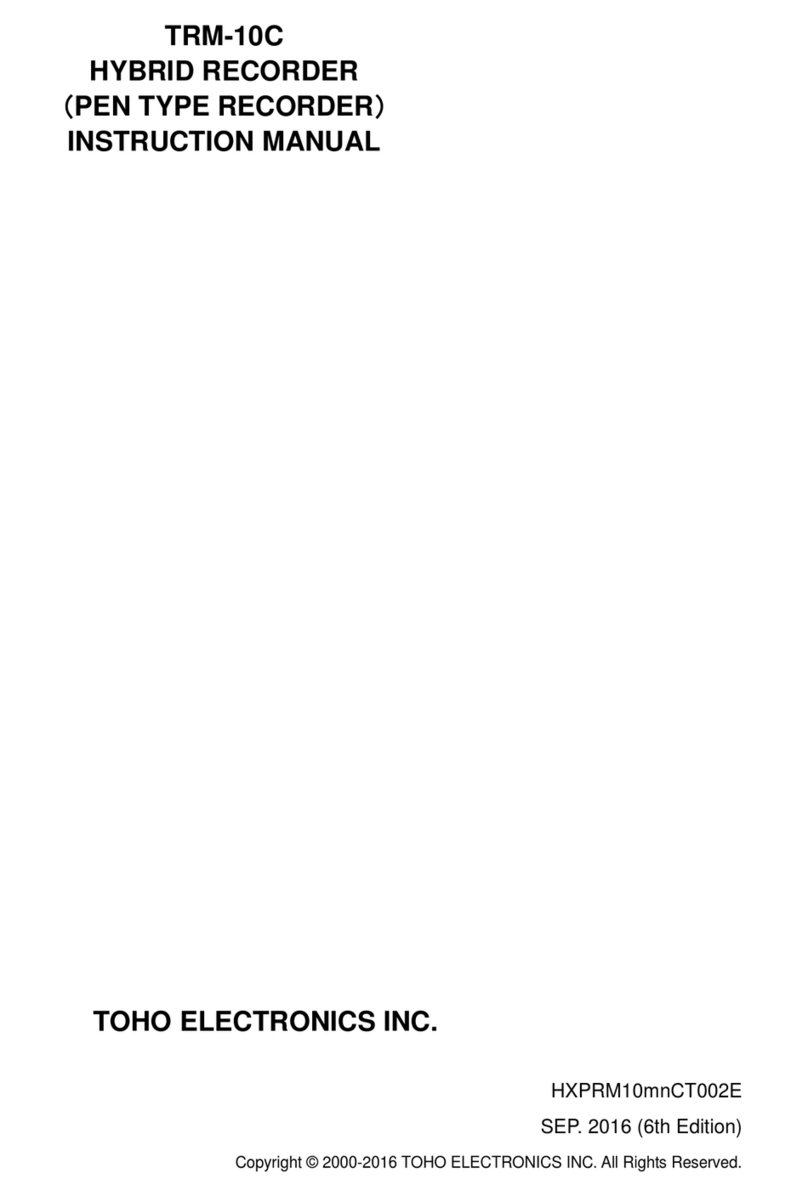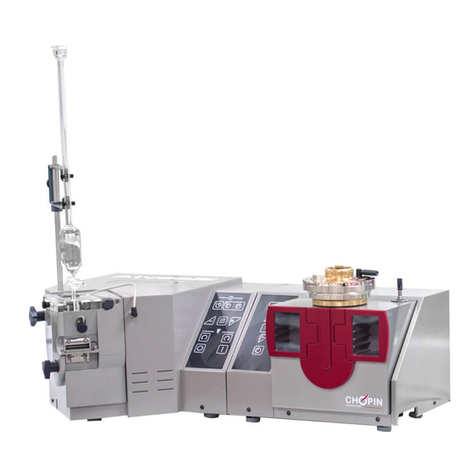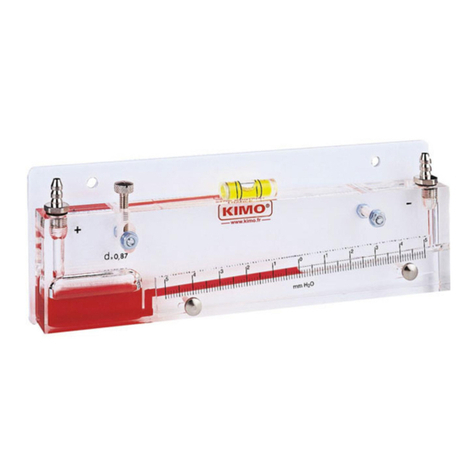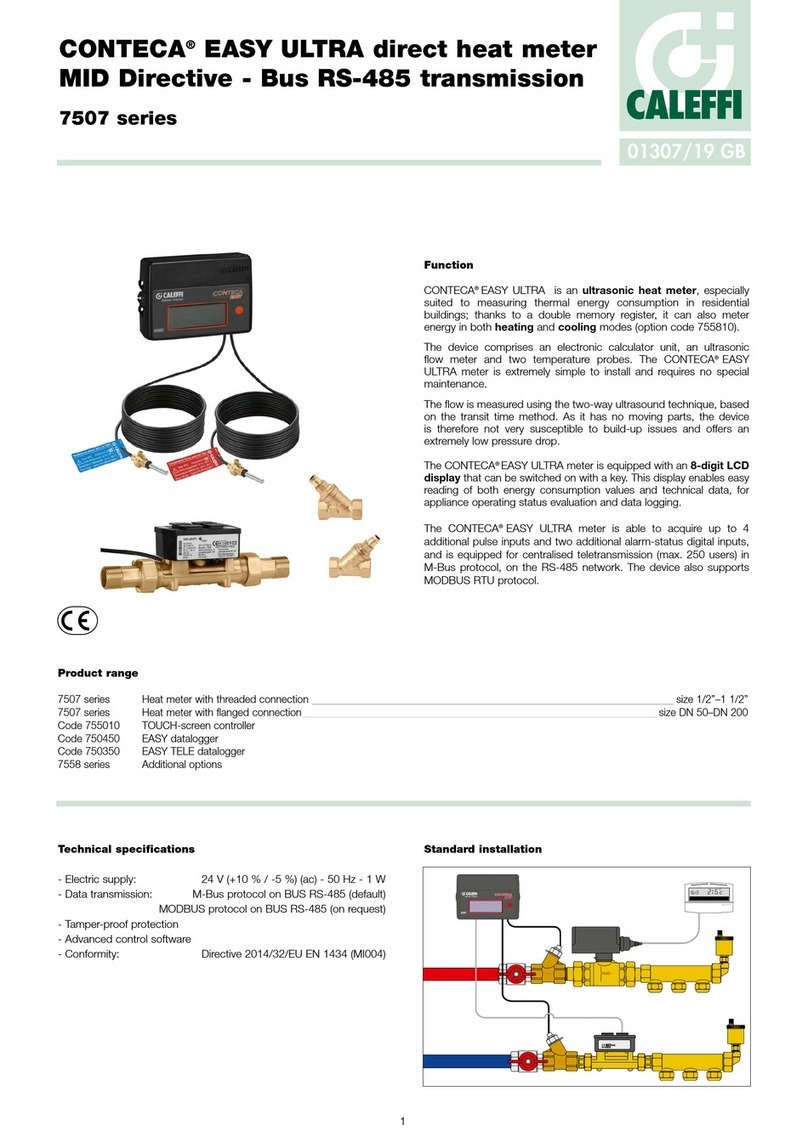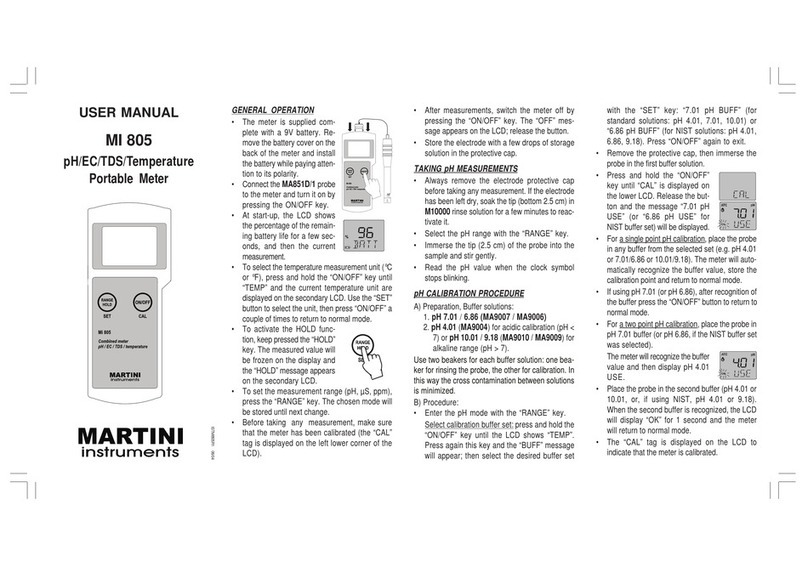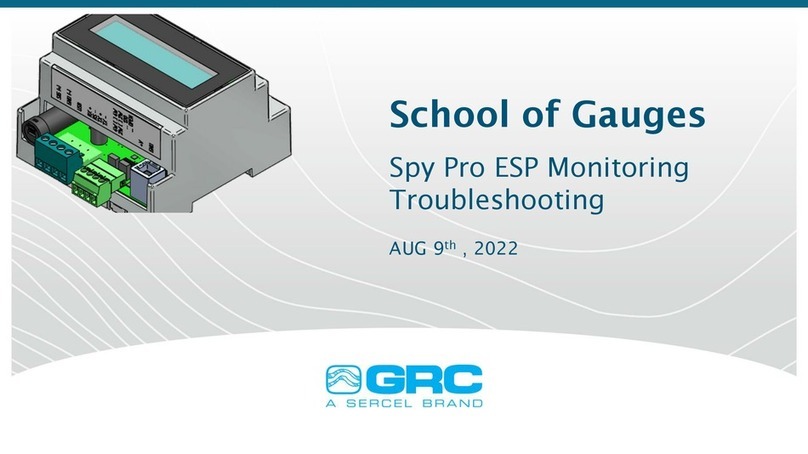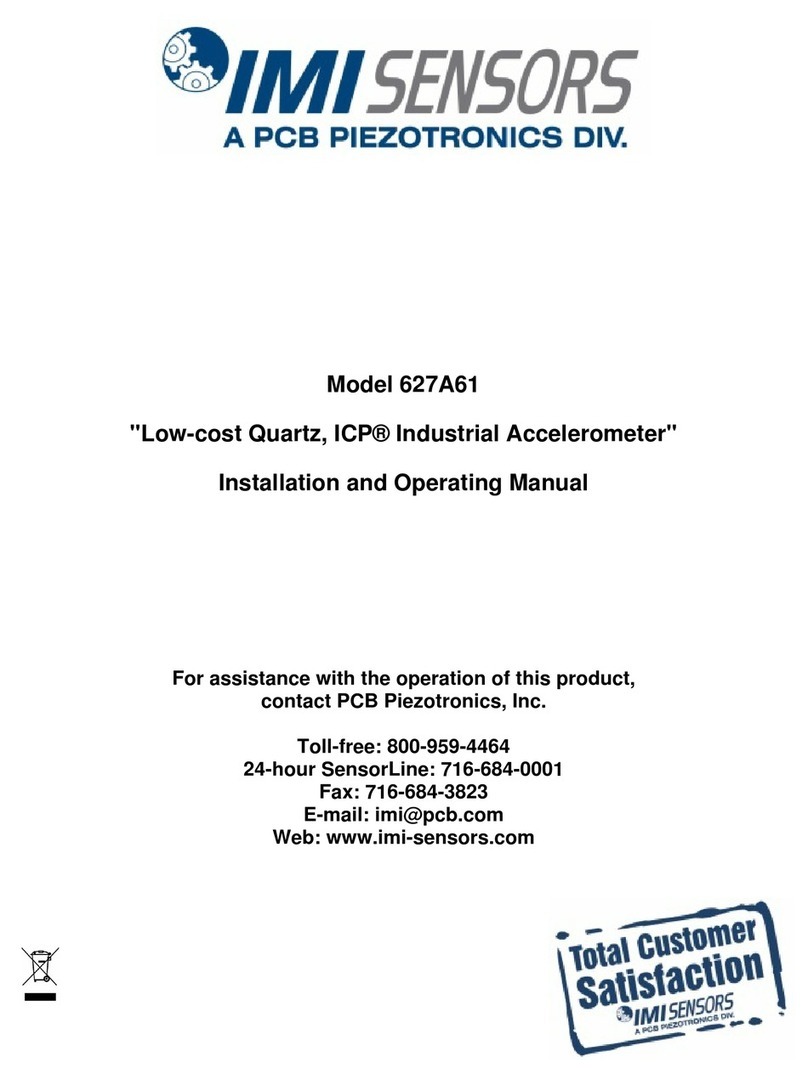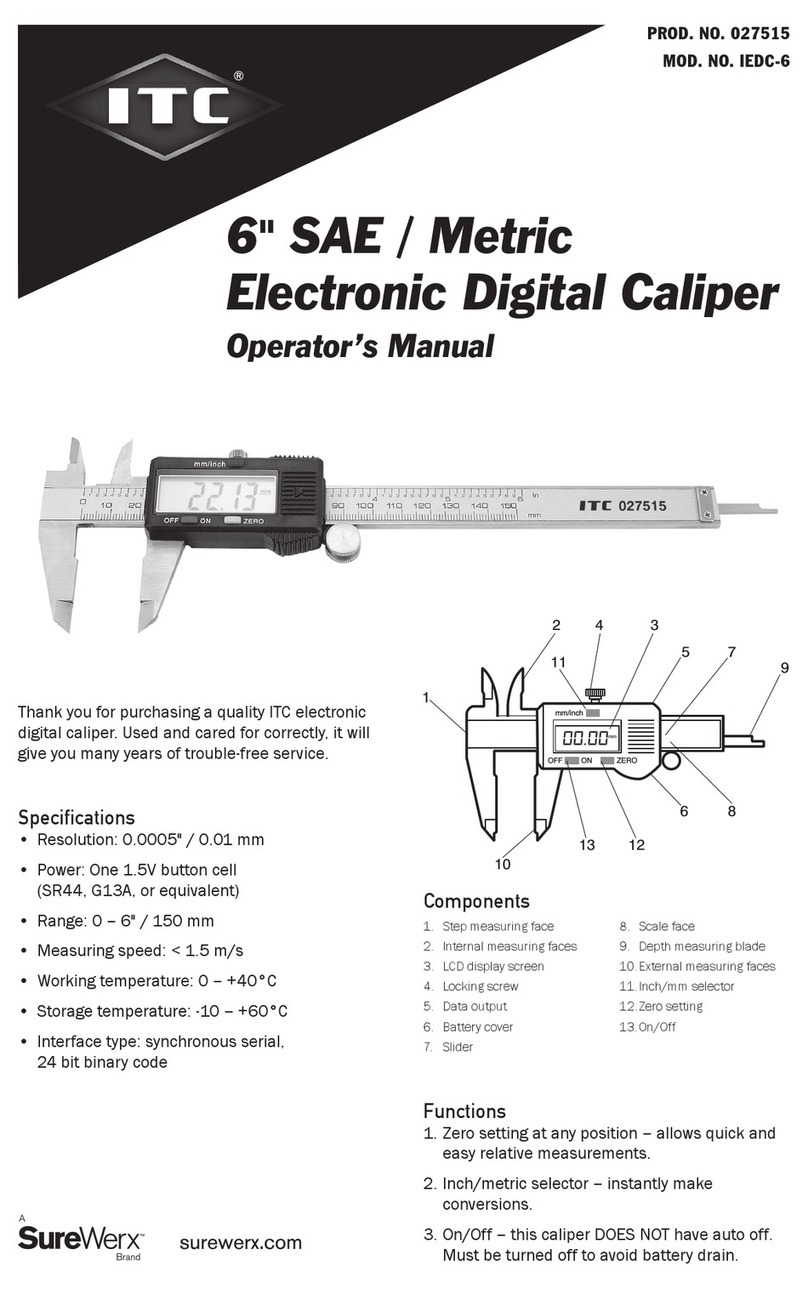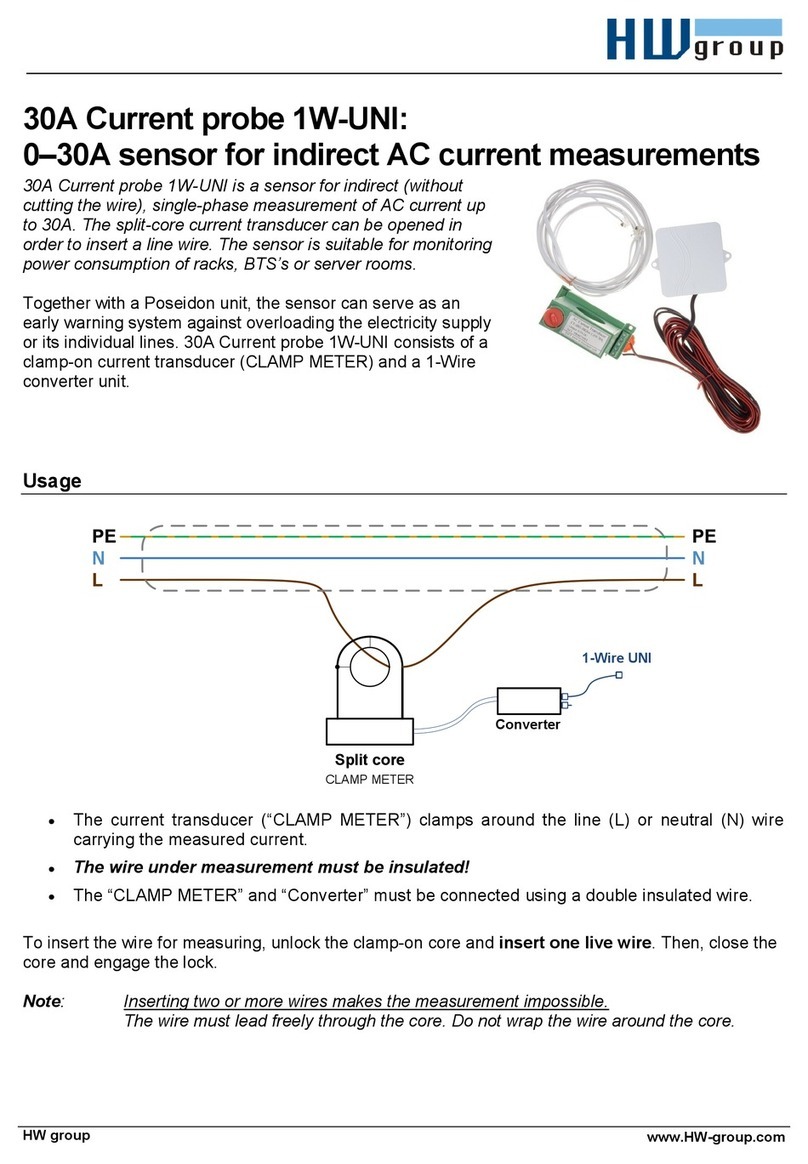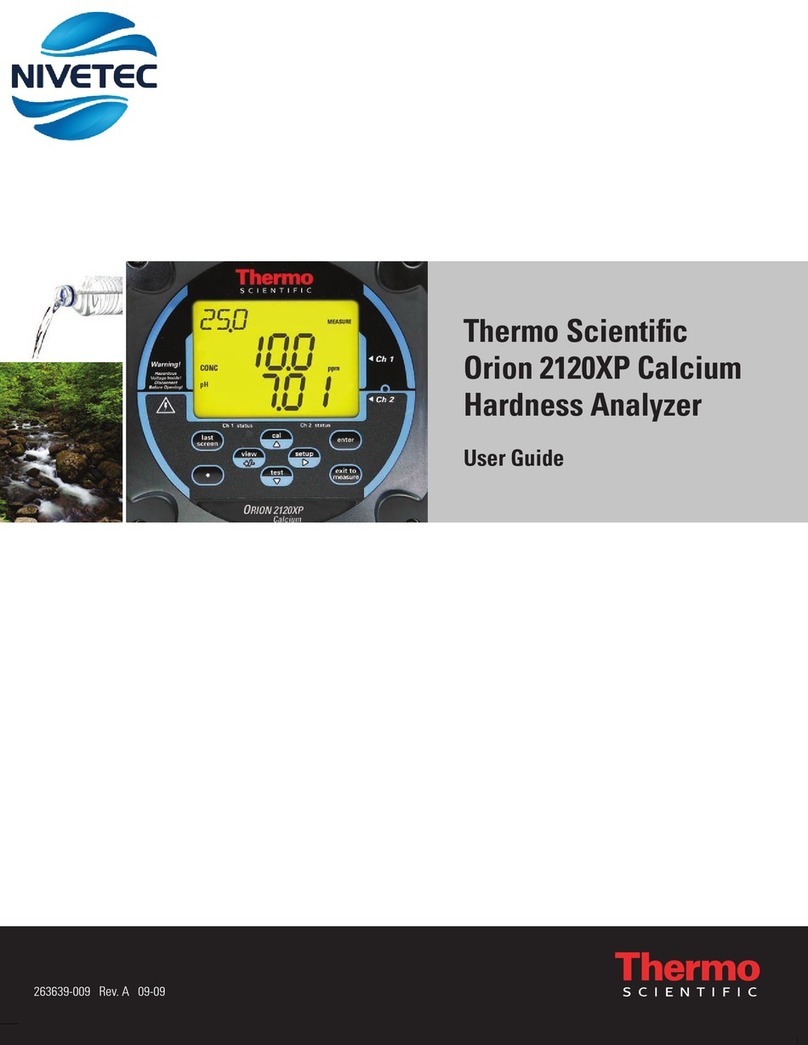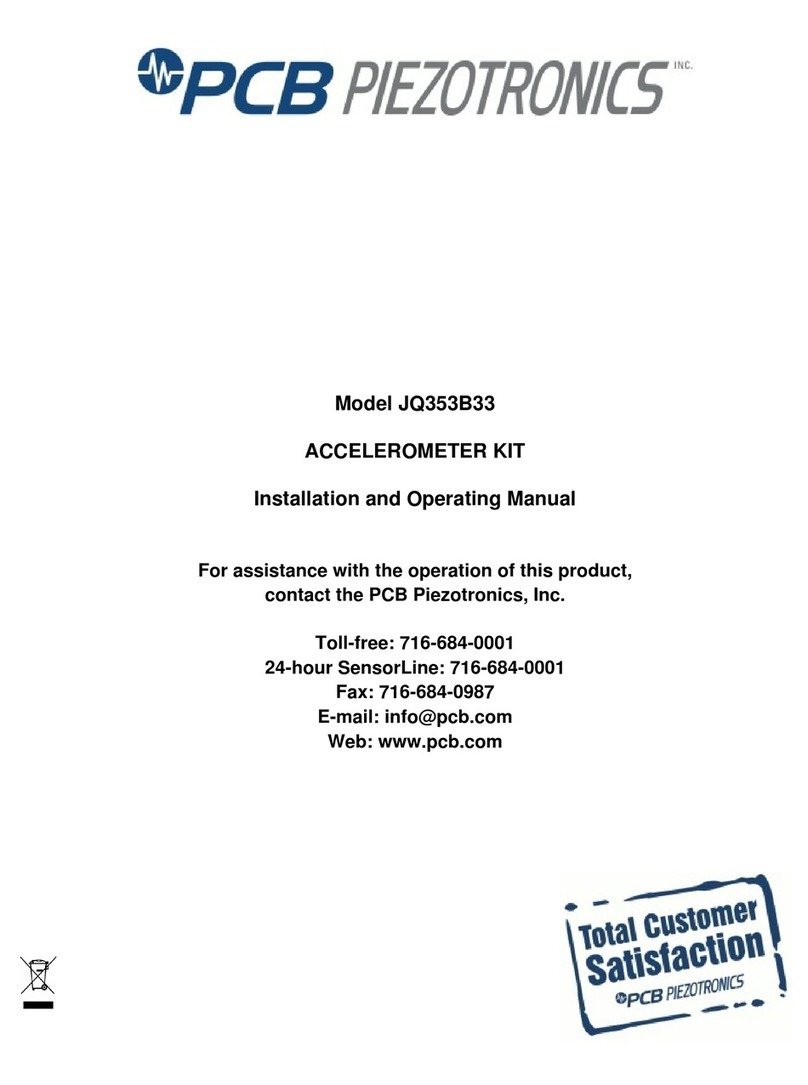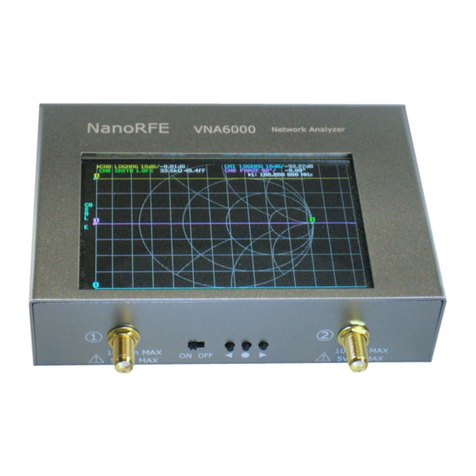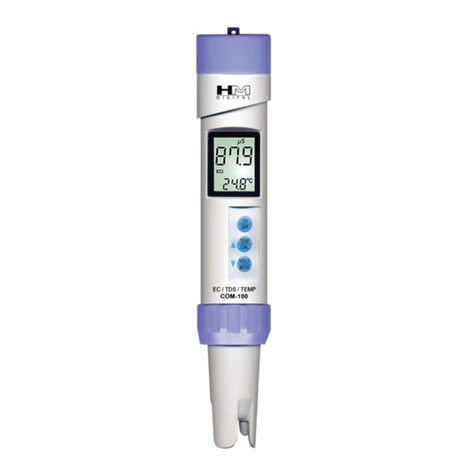Toho Electronics TRM-10C User manual

TRM-10C
HYBRID RECORDER
(MULTIPOINT TYPE RECORDER)
INSTRUCTION MANUAL
TOHO ELECTRONICS INC.
HXPRM10mnCT001E
AUG. 2022 (8th Edition)
Copyright © 2000-2022 TOHO ELECTRONICS INC. All Rights Reserved.

―1―HXPRM10mnCT001E
For safety using
Thank you for purchasing our TRM-10C Hybrid Recorder.
In order to this instrument to exhibit all of its functions effectively and correctly, read and understand this
instruction manual thoroughly before using the instrument.
Don't use this product in any method not specification by manufacturer. The protective features of this
product may be impaired if it is used in a method not specified in the operation manual.
The symbols below are used on this instrument for the cautioning information.
Symbols used on the instrument
This shows “Caution for handling”. This symbol is used on the parts need to
reference the instruction manual for saving human body and the instrument.
This shows “Protective grounding”. Be sure to provide protective grounding prior
to operate this instrument.
AC
This shows “Risk of electric shock”. This symbol is used on the parts, which has
a risk of electric shock.
Be sure to observe the following warnings/cautions and those provided in the text
in order to secure safety in handling the instrument.
WARNING
(1) In order to prevent electric shock; be sure to disconnect this instrument from the main
power source when wiring it.
(2) When the effect on the system is expectedby the error occurs due to external factors
or failure the instruments, take precautions to ensure the overall safety of your
system.
(3) Take precautions to so that an alien substance does not get into the instruments
aperture.
(1) In order to prevent an electric shock; be sure to provide protective grounding prior to
turning on this instrument.
(2) Do not cut a protective grounding conductor or disconnect protective grounding.
(1) Make sure that the supply voltage for this instrument conforms to the voltage of the
supply source.
Rated power voltage range :100-240VAC
Working supply voltage range :85-264VAC
Rated power frequency :50/60Hz
Power consumption :30VA max
(2)Attach a protective cover prior to turning on this instrument.
(3) Power module that is used in the instruments conform to EN60950
(1) Do not operate this instrument in the environment where it is exposed to a
combustible/explosive/corrosive gas or water/steam.
(2) Please use in an environment that is shown in the following.
Installation features :Indoor
Altitude :2000m or less
Ambient temperature :0-50℃
Ambient humidity :20-80%RH(Non condensing)
Overvoltage category :Category Ⅱ
Allowable pollution degree :Pollution degree 2
Vibration :10~60Hz 0.2m/s2
Impact :The impact is not allowed.
Provide input and output wiring after turning off the power.
Input and Output Wiring
General
Protective Grounding
Power Source
Working Environment

―2―HXPRM10mnCT001E
CAUTION
Do not use empty terminals for other purposes such as relaying, etc.
Do not touch the switches, etc. inside this instrument. Also, do not replace the
main unit or PRINTed circuit boards. When this is neglected, we cannot
guarantee functioning of the instrument. Contact our dealer where you
purchased the instrument, or our sales representative.
When transporting this instrument or the equipment with this instrument
incorporated in it, take measures to prevent opening the door and falling out
the inner module.
[Note]
(1) Deliver this instruction manual to an end user.
(2) Prior to handling this instrument, be sure to read this manual.
(3) If you have any questions on this manual or find any errors or omissions in
this manual, contact our sales representative.
(4) After reading this manual, keep it carefully by the instrument.
(5) When the manual is lost or stained, contact our sales representative.
(6) It is prohibited to copy or reproduce this manual without our permission.
(1) When installing this instrument, put on a protective gear such as safety
shoes, helmet, etc. for your safety.
(2) Do not put your foot on the installed instrument or get on it, because it is
dangerous.
Only our serviceman or persons authorized by TOHO are allowed to remove
and take the inner module, the main unit and PRINTed circuit boards apart.
(1) Dispose the replaced batteries in a correct way.
(2) Do not incinerate plastics of maintenance parts and replacement parts. A
harmful gas may be produced.
(1) Use dry cloth to clean the surface of this instrument.
(2) Do not use any organic solvent.
(3) Cleaning the instrument after turning off the power.
This instruction manual is subject to change without prior notice.
Manufacturer:TOHO ELECTRONICS INC.
Address :2-4-3 Nishihashimoto, Midori-Ku, Sagamihara-Shi, Kanagawa 252-0131 Japan
Input and Output Wiring
Transportation
Inside of Instrument
Instruction Manual
Installation
Maintenance
Disposal
Cleaning
Revisions

―3―HXPRM10mnCT001E
Using procedure for this manual
1. Using procedure
This instruction manual consists of “For safety using”, “Contents” and “Chapter 1 to Chapter 11” as bellow.
Read the applying sections for your purpose to use this instrument.
Chapter and TITLE
For purchase
and install
For initial
setting and
change setting
For daily
operation
For using
communication
For
maintenance
and
trouble-shootin
g
For safety using (page 1)
◎
◎
◎
◎
◎
1. INTRODUCTION
◎
2. CONSTRUCTION
○
○
○
○
3. INSTALLATION
◎
○
4. WIRING
◎
○
○
○
○
5. PREPARATIONS FOR
OPERATION
○
◎
6. OPERATION
○
◎
7. DEVICE SETTING
◎
○
○
8.COMMUNICATIONS
◎
9. MAINTENANCE
◎
10. TROUBLESHOOTING
○
◎
11. SPECIFICATIONS
○
○
○
◎:Be absolutely certain to read this.
○:Be certain to read this if you need.
The symbols below are used on the warning and cautioning information in this manual.
Symbols used on this manual
WARNING
Failure to observe this information could result in death or injury.
Be absolutely certain to read this.
CAUTION
Failure to observe this information could damage the instrument.
Be certain to read it.
[Note]
This is cautionary information for correct use of the instrument.
Be certain to read it.
[Reference]
This is information to help youuse the functions of this instrument more
effectively.
2. Guide of Instruction manual
The instruction manuals of this instrument are as the table below.
Name
Part No.
Outline
1
TRM-10C Hybrid Recorder
(Multipoint type) instruction
manual
HXPRM10mnCT001E
Explanation for installing, wiring,
standard operation. And setting
or operation for using this
instrument.
2
TRM-10C Hybrid Recorder
Communication Command
instruction manual
HXPRM10mnCT005E
Explanation for reading and
writing data of the recorder by
communication function.
This
manual

―4―HXPRM10mnCT001E
CONTENTS
1. INTRODUCTION...................................................................6
1.1 HybridRecorder...........................................................................6
1.2 CheckingtheAccessories............................................................6
1.3 CheckingtheTypeandSpecifications........................................7
1.4 TemporaryStorage.......................................................................8
1.5 IndicationCard..............................................................................8
2. CONSTRUCTION..................................................................9
2.1 Appearance ................................................................................9
2.2 DisplayScreenandOperationKeys.........................................10
2.2.1 DisplayScreen.....................................................................10
2.2.2 OperationKeys.....................................................................11
3. INSTALLATION.................................................................. 12
3.1 OutsideDimensionsDrawingandPanelCuttingDimensions.........12
3.2 MountingtothePanel................................................................13
3.2.1 ProcedureforMountingtothePanel..................................13
3.2.2 MountingtothePanelincompliance withtheIP65............14
4. WIRING................................................................................ 15
4.1 TerminalLayoutandPowerWiring...........................................15
4.1.1 Terminal Layout....................................................................15
4.1.2 PowerWiring........................................................................15
4.1.3 WiringProcedure..................................................................16
4.2 InputWiring.................................................................................17
4.2.1 WiringProcedure..................................................................18
4.3 DI/AlarmOutputWiring(Option)................................................20
4.3.1 DI/AlarmOutputWiringExample........................................20
4.3.2 AlarmOutputWiringProcedure..........................................21
4.3.3 DI WiringProcedure.............................................................21
4.4 CommunicationWiring...............................................................22
4.4.1 RS-232CWiring...................................................................22
4.4.2 RS-485Wiring......................................................................22
5. PREPARATIONS FOR OPERATION .............................. 23
5.1 SettingtheChartPaper..............................................................23
5.2 SettingtheRibbonCassette......................................................29
6. OPERATION....................................................................... 31
6.1 Operation....................................................................................31
6.1.1 StatusafterInitialScreen.....................................................31
6.2 Recording...................................................................................32
6.2.1 RecordingColors..................................................................32
6.3 HowtoRecord............................................................................32
6.3.1 Starting/StoppingRecordingOperation..............................32
6.3.2 Feedthe ChartPaper..........................................................32
6.3.3 PrintSample.........................................................................33
6.4 DigitalPrint..................................................................................34
6.4.1 ManualPrint..........................................................................34
6.4.2 ListPrint................................................................................35
6.4.3 EngineeringListPrint...........................................................37
6.4.4 RecordStart/EndPrint ........................................................39
6.4.5 DIManualPrint.....................................................................39
6.4.6 DI Date/TimePrint................................................................39
6.4.7 DI CommentPrint.................................................................40
6.5 ChangingtheDisplay ...............................................................41
6.5.1 AutoDisplay< >....................................................41
6.5.2 ManualDisplay< >....................................................41
6.5.3 Date Display< >....................................................41
6.5.4 TimeDisplay< >....................................................41
6.5.5 DisplayOff < >...........................................................41
7. DEVICE SETTING.............................................................42
7.1 SettingtheSetupMode............................................................. 42
7.1.1 Settingthe Range................................................................ 45
(1) Settingmethod..................................................................... 45
(2) (Current/Voltage), (Thermocouple),
(ResistanceTemperatureDetector)........................ 46
(3) (Scaling)............................................................48
(4) (SquareRoot).......................................................50
(5) (Decade)........................................................... 52
(6) (Difference),(Sum),
(Average)..............................................................54
(7) (Skip).....................................................................55
7.1.2 SettingtheAlarm..................................................................56
7.1.3 Settingthe Unit.....................................................................58
(1) Character CodeTable..........................................................59
7.1.4 Settingthe ChartSpeed...................................................... 60
7.1.5 Settingthe DateandTime...................................................61
7.1.6 CopyingtheSettingData.....................................................62
7.1.7 SettingOtherFunctions.......................................................63
(1) (PrintingCycle).................................................64
(2) (ZoneRecording).................................................64
(3) (PartialCompression/Expansion).......................65
(4) (DigitalPrint).....................................................66
(5) (Tag)..........................................................................67
(6) (CommentWords)...............................................68
7.2 SettingtheEngineeringMode...................................................69
7.2.1 AlarmHysteresis..................................................................72
7.2.2 BurnoutON/OFF.................................................................72
7.2.3 ChannelOffset.....................................................................72
7.2.4 ReferenceJunctionCompensation....................................73
7.2.5 ChangingthePrintingColor ............................................... 74
7.2.6 SettingsRelatedtoRecording............................................75
(1) Recordingstart/stoptriggersetting.....................................75
(2) Tag/channelprintselection..................................................75
(3) AlarmprintON/OFF.............................................................76
(4) LoggingprintON/OFF......................................................... 76
(5) ScaleprintON/OFF............................................................. 77
(6) LoggingprintSynchronous/Asynchronous........................ 78
7.2.7 Settingthe Communication Function..................................78
7.2.8 InitializingtheSetupData ...................................................79
7.2.9 DIFunctions......................................................................... 79
7.2.10 TemperatureUnit...............................................................80
7.2.11 Point Calibration.................................................................80
7.2.12 DataCalibration.................................................................82
7.3 TerminatingtheEngineeringMode...........................................84

―5―HXPRM10mnCT001E
8. COMMUNICATIONS......................................................... 85
8.1 GeneralDescription....................................................................85
8.1.1 GeneralDescriptionofFunctions........................................85
8.1.2 TransmissionSpecifications................................................85
8.2 OriginalProtocol.........................................................................86
8.2.1 DataConstruction.................................................................86
8.2.2 Opening/ClosingtheLink.....................................................86
8.2.3OutputtingtheProcessVariableData.................................87
8.2.4 OutputtingtheUnitandDecimalPointPositionData.........90
8.2.5OutputtingtheStatus............................................................91
8.2.6DataReceptionExample.....................................................92
8.3ModbusRTUProtocol...............................................................93
8.3.1 DataConstruction.................................................................93
8.3.2 Function Codes....................................................................93
8.3.3ErrorResponse....................................................................93
8.3.4 Reading fromtheInputRegisterArea................................94
8.3.5Reading fromorWritingtotheHoldingRegisterArea......97
9. MAINTENANCE................................................................. 98
9.1 Inspection....................................................................................98
9.2 Cleaning......................................................................................98
9.3 ReplacingConsumables............................................................99
9.4 Adjust Dot PrintingPosition(PointCalibration).........................99
9.5 Calibration(DataCalibration).....................................................99
(1) CalibrationofVoltage.........................................................100
(2) CalibrationofResistanceTemperatureDetector..............100
(3) CalibrationofReferenceJunctionCompensation............101
10. TROUBLESHOOTING.................................................. 102
10.1 Troubleshooting.....................................................................102
10.1.1 TroubleItems...................................................................102
10.1.2 WhentheRecorderDosenotWork atAll......................102
10.1.3 WhenthereisaBigError................................................103
10.1.4 WhentheTrendRecordingDeflected............................103
10.1.5 WhenRecordsNothing...................................................104
10.1.6 WhenRecordingisFaint.................................................104
10.1.7 WhentheChartPaper isnotfedatAll............................105
10.1.8 WhentheChartPaper isnotfedProperly......................105
10.2 Self DiagnosticsFunction(ERROR)....................................106
10.2.1 SelfDiagnosticItems.......................................................106
10.2.2 ErrorDisplay.....................................................................107
11. SPECIFICATIONS.......................................................... 108
11.1 CommonSpecifications.........................................................108
11.1.1 InputSignal.......................................................................108
11.1.2 PerformanceandCharacteristics....................................108
11.1.3 Structure...........................................................................109
11.1.4 PowerSource...................................................................109
11.1.5 Normal OperatingConditions..........................................109
11.1.6 Alarm(RelayOutputisOptional)......................................110
11.1.7 SafetyStandardandEMIStandard.................................110
11.1.8 DIFunction (Option)..........................................................110
11.1.9 Paper-emptyDetectingFunction(Option).......................110
11.2 StandardSettingSpecifications.............................................111
11.2.1 MeasurementRange........................................................111
11.2.2 TheAccuracyattheComputation....................................114
(1) Scaling..................................................................................114
(2) SquareRootComputation..................................................114
(3) Decade.................................................................................115
(4) Difference,Sum,andAverage............................................115
11.2.3 IndividualSpecifications....................................................116
11.2.4 StandardFunctions...........................................................117
11.3 StandardSetting Functions....................................................118
11.3.1 StandardSettingFunctions..............................................118
11.4 OptionalFunctions..................................................................118
11.4.1 RemoteFunctionofDI......................................................118
11.4.2 AlarmBoard......................................................................118
11.4.3 Communication Unit.........................................................118

―6―HXPRM10mnCT001E
1. INTRODUCTION
1.1 Hybrid Recorder
The values of the measured variable are recorded with dot point type recording, and indicates data in the
digital display. The Hybrid recorder has also Alarm function that indicates, records event data and outputs by
relays, and Communicationfunction for datatransmission.
1.2 Checking the Accessories
Upon delivery of this instrument, unpack and check its accessories andappearance.
If there are any missing accessories or damages on the appearance, contact our dealer where you
purchased the instrument, or our sales representative.
Following accessories should beattached.
①Chartpaper ②Ribboncassette ③Mountingbracket
④Instruction manual ⑤Packing
Fig. 1.1 Accessories
Table 1.1 List of Accessories
No.
Part Name
Type
Quantity
Remarks
1
Chartpaper
HZCGA0105EL001
1
50equaldivisions
2
RibbonCassette
WPSR188A000001A
1
3
Mountingbracket
H4A14175
2
Panel mounting bracket
4
Instruction manual
HXPRM10mnCT001E
1
This manual
5
Packing
H4H14900
1
ForIP65
[Note]
The ribboncassette hasbeen set in the instrument upon shipment.

―7―HXPRM10mnCT001E
1.3 Checking the Type and Specifications
A nameplate is affixed to the inside of the instrument. Remove the chart holder and make sure that the
nameplate is affixed to the middle far side of the instrument.
Make sure that this instrument meetsyour requested specification, seeingthe following tables.
Table 1.2 Type
06 6-Multipoint type recorder
①Model
0RS-232C(Standard)
②Communication
1RS-485(Option)
③DI/DO(Option)
1
2
3
9
7
4
5
6
11
8
10
T
R
M
-
1
0
0
C
①
②
③
④Paper-emptySensor(Option)
0None
1Yes
④
0None
16Relay output
23DI
33DI+
6 Relay output
12
6
13
T

―8―HXPRM10mnCT001E
1.4 Temporary Storage
Store the instrument inthe following environment.
When incorporated in theequipment, store it in the following environment as well.
1.5 Indication Card
An indicationcard has been affixed to the door upon delivery. Enter anameas required.
CAUTION
Storage in a poor environment may damage the appearance, functions, andservice life of theinstrument.
Storage Environment
・Aplace with little dust.
・Aplace free from combustible, explosive, or corrosive gases ( SO2, H2S, etc.).
・Aplacefree fromvibrationsorshocks.
・Aplace frees from water or steam or highhumidity (95% RHmax.).
・Aplace free from direct sunshine orhigh temperature (50℃max.).
・Aplace free from an extremely low temperature ( -20℃min. ).
CAUTION
Note that ifa non-original nameplate is attached, it may damage thedoor or mounting part.

―9―HXPRM10mnCT001E
2. CONSTRUCTION
2.1 Appearance
Fig. 2.1 Appearance
Ribboncassette
Door
Chartholder
Display keyboard
Terminalblock
Printer
Case
Mountingbracket
Indicationcard

―10―HXPRM10mnCT001E
2.2 Display Screen and Operation Keys
2.2.1 Display Screen
The following describes the display screen. Since the channel numbers and data are indicated by a
7-segmentLED,alphabetsaresymbolizedtorepresentthem.
For theLED display, see" SymbolizedAlphabets forDisplay" at[Reference] below.
Fig.2.2 Display
[Reference] SymbolizedAlphabets for Display
Display
Alphabet
A
B
C
D
E
F
G
H
h
I
J
K
L
l
Display
Alphabet
M
N
O
P
Q
R
S
T
U
V
W
X
Y
Z
RUN ALM
CH.No DATA
RUN MENU PRINT FEED ENT
ESC ▲
▲
Alarm Type Display
Indicates an alarmtype inred.
"H"isilluminatedwhen thealarmisHigh.
And “L”is illuminated when the alarm is
Low. Neither ofthemisilluminatedwhen
thereis noalarm.
Channel No. Display
Indicatesachannel
number in orange.
Data Display
Indicates the process
variable, time,setting
screen,etc.inorange.
Operation Keys
Use these keys for setting and
otheroperations.
Status Display
The "RUN"lamp (orange) is illuminatedwhen
recording. The"ALM" lamp(red) is illuminated
whenthealarmisbeingactivated. denotes
that the lamp goes out and denotes that it
isilluminated.
H
L

―11―HXPRM10mnCT001E
2.2.2 Operation Keys
The following describes each operationkey.
This manual represents the actualoperationkeys as shown in the figurebelow.
Fig. 2.3 Actual Display and Operation Keys
Table 2.1 Names of Operation Keys and Their Functions
Key
Name
Function
“RUN”key
Starts/stops recording.
Tostop,holddownthe“RUN”keyfor 3secondsormore.
(Goneoutthe “RUN”lamp.) Tostart,press the“RUN”key.
(Illuminates the“RUN”lamp.)
“MENU”key
MENUfunction
Selects engineering list print and change to the
settingmode.
“ESC”key
ESCfunction
Exitsthatmenuhalfwayselectinga function.
“PRINT”key
PRINT function
Used to perform manual printorlistprint.
“△”key
△function
Used to select a setting parameter (numeral or
built-incommand)(ascendingdirection).
“FEED”key
FEEDfunction
The chart paper is fed while the key is pressed, and
stoppedwhenreleased.
“”key
function
Used to shifta digit insetting anumeral.
“ENT”key
Used for registering a setting parameter (numeral or built-in command)
after selecting it, or executing a function. Pressing this key executes the
setting.
RUN
ESC
MENU
PRINT
FEED
ENT
RUN ALM
CH.No. DATA
RUN MENU PRINT FEED ENT
ESC ▲
▲
RUN
PRINT
FEED
ENT
ESC
MENU
H
L

―12―HXPRM10mnCT001E
3. INSTALLATION
3.1 Outside Dimensions Drawing and Panel Cutting Dimensions
Fig. 3.1 Outside Dimensions and Panel Cutting Dimensions
CAUTION
For maintenance andsafety of the instrument, it is recommended to securethe spacing larger than the
parenthesized dimensions per unit.
Unit: mm
<Front>
<Rear>
<Side>
<PanelCutting>
(56)
144
144
3.5
2.5
(100)
RUN
ALM
RUN
MENU
PRINT
FEED
ESC
CH, NO.
ENT
DATA
137
137
200 min
1
3
8
+
1
-
0
138+1
-0
(128)
7 MAX
(Panel thickness)
2
5
1
5
0
200 min
(128)
Dimension required
when the door is fully
opened(135゜).
(Wall on the left side).

―13―HXPRM10mnCT001E
3.2 Mounting to the Panel
3.2.1 Procedure for Mounting to the Panel
1) Assemble the mounting bracket refer to Fig.3.2.
2) Fit in this instrument through thefront of the panel.
3) Fit the claws of the mounting bracket into the square holes in the top and bottom surfaces of the
case.
4) Tighten the screw of the mounting bracket with a screwdriver to attach it to the panel. When the
mounting unit doesnot move back andforth any more, tighten ascrew by180゚.
Fig. 3.2 Mounting bracket
[Note]
If it istightened with an excessive force, thecase may be distortedand the mounting bracket may be
deformed. An adequate tightening torque isabout 0.2to 0.3 N・m(2~3kgf・cm).
WARNING
Do not install the instrument in aplace exposed toa combustible, explosive, or corrosive gas (SO2, H2S,
etc.).
CAUTION
Installthe instrument in the followingplaces
・Aplacefree fromwherehumidity often changes.
・Aplace of normal temperature (25℃orso).
・Aplace exposed to as little mechanical vibrations as possible.
・Aplacewithas little dusts as possible.
・Aplace affected by the electromagnetic field as little as possible.
・Aplace not directlyexposed to highradiant heat.
・Aplace where the altitude is upto 2000m.
・Humidity has an effect on the chart paper and ink. Use the instrument in a humidity range of20 to
80%RH(60%RHisoptimum).
・This instrument needsthe inside installation.
Mountingto the Panel
・Asteel plate not thinner than 1.2mm is recommended as a mountingpanel.
・The maximum thickness of the mounting panel is 7mm.
Inclination
・Install the instrument horizontally.
・The instrument should be installed so that its inclination should be 0゜at the front and within 30゜at the
rear.
Assemble in such a manner
that the screw nose will be
almost aligned with the plate
surface.
MountingClaw
Body
MountingClaw

―14―HXPRM10mnCT001E
Fig. 3.3 Mounting to the Panel
3.2.2 Mounting to the Panel in compliance with the IP65
Prior to mounting the instrument to the panel, attach apacking tothe position shown inthe figure.
The rest of the procedure is the same.
Fig. 3.4 Mounting to the Panel(in compliance with the IP65)
Mounting of Packing
Packing
Panel
Mountingbracket
Packing
Panel
Screw
Panel
Mountingbracket
Screw

―15―HXPRM10mnCT001E
4. WIRING
4.1 Terminal Layout and Power Wiring
4.1.1 Terminal Layout
Fig. 4.1 Terminal Layout (Rear view)
4.1.2 Power Wiring
Powersource
terminal block
Communication
terminal block (RS-232C)
Input terminal block
6Relay outputs
Communication
terminal block (RS-485)
3DIterminalblock
L N
1A 2C2A1C 3A 4C4A3C 5A 6 C6 A5 C
4+
B
4-
B
4
A
5+
B
5-
B
5
A
6+
B
6-
B
6
A
1+
B
1-
B
1
A
2+
B
2-
B
2
A
3+
B
3-
B
3
A
SG
RDTD
+
-
DI
COM DI
3DI
2
DI
1
WARNING
①In order to prevent an electric shock, be sure to provide protective grounding prior to turning on the
instrument.
②Do not cut aprotective grounding conductor ordisconnect protective grounding.
③Make sure that thesupply voltage for the instrument conforms to the voltage of the supply source.
④Attach a transparent protective cover prior to turning onthe POWER of the instrument.
⑤Any interruption of the protective conductor inside or outside the apparatus or disconnection of the
protective grounding terminal is likely to make the apparatus dangerous under some fault conditions.
Intentional interruption is prohibited.

―16―HXPRM10mnCT001E
4.1.3 Wiring Procedure
1) Put your fingers on the left and right (both sides) hooks of the transparent protective cover on the
power source terminal block. Pushing them inside,take out the cover to this side.
2) Connect the power source electric wire refer to Fig. 4.2. Connect the protective grounding to the
terminal. Connect the non-grounding side of the power source to "L" terminal. Connect the
grounding side to the "N" terminal.
3) Put back the transparent protective cover.
4) Make sure that protective grounding is properly provided.
Fig. 4.2 Power source Terminal block
LN
CAUTION
Thetransparentprotectivecovershould surelyremovethe leftandright(both sides)hookssimultaneously.
If it removes by turns, there is a possibility that it may damage.
Powersupply voltage
Rated power voltagerange :100-240VAC
Workingsupplyvoltage range :85-264VAC
Rated power frequency :50/60Hz
CAUTION
①Asanelectricwireforthepowersource,usea600Vvinylinsulatedwire(AWG20to 16, IEC60227-3)
or its equivalent orabove.
②Attach aring terminal with insulatedsleeve (for M3.5) tothe end ofthe electric wire.
③Please installa protective ground terminal on the device to which the recorder is installed. It is
necessary to connect terminal to the protective ground terminal provided on the device.
④Connect a protective grounding (resistance:100Ωor lower, a minimum diameter of a grounding
conductor:1.6mm)tothe protectivegrounding terminal.
⑤If other instrument shares the protective grounding conductor, there may be an effect caused by
noise comingfromthe grounding conductor. It is recommended not to share it withother instrument.
⑥In orderto comply with therequirements of safety standard EN61010-1, the recorder shall haveone
ofthefollowingasadisconnectingdevice, fittedwithineasyreachoftheoperator, andlabeledasthe
disconnecting device.
a.Acircuit breaker whichcomplies with the requirements of IEC60947-1,IEC60947-3
(Rated current 1A).
b.Aseparable couplerwhich can be disconnected without the useof a tool.
c.Aseparable plug, without a locking device, tomate with asocket outlet in the building.
⑦This product has designed to conformto EN61010-1 installation CategoryⅡand pollution
degree 2.
⑧Please usethe main power supply by the change within 10% of the rated voltage.
⑨Transitional current might flow to the main power supply when the power supply is turned on.

―17―HXPRM10mnCT001E
4.2 Input Wiring
CAUTION
①Precautions forthe input electric wire
⚫See that no noise is mixed in input wiring. For input wiring, it is recommended touse a shielding
wire or twisted wire effectivefor noise.
⚫In case of thermocouple input, connecta thermocouple wire directly or use a compensating lead
wire. It is recommended to use ashielded input line.
⚫In case of resistance temperature detector input, dispersion of 3-wire lineresistance should be
less than the below mentioned values. It is recommendedto use ashielded input line.
ForPt100,JPt100;50mΩmax.
⚫Whenitislikelytobeaffectedbyinductionnoise,particularly whenwiringnearthehigh-frequency
power source, it is recommended tousea shielded twisted wire.
⚫Attach a ring terminal with insulated sleeve (for M3.5) tothe end of theelectric wire.
②Precautionsforwiring
⚫The wiring between the instrument and measurement point should be kept away from the power
circuit (25V or higher circuit or DO circuit).
⚫Short-circuit unused input terminals. (Short-circuit between "+"and"-" in case of mV, V, or
thermocouple input, andshort-circuit amongA, B, and B in case of resistance temperature
detector input.)
⚫Ground the shield of connecting wire.

―18―HXPRM10mnCT001E
4.2.1 Wiring Procedure
Fig. 4.3 Input Wiring
1) Put your fingers on the left and right (both sides) hooks of the transparent protective cover on the
input terminal block. Pushing them inside,take out the cover to this side.
2) Wire the input lines refer to Fig. 4.3, Fig. 4.4(Page 18) and Fig.4.5.(Page 19)
3) Put back the transparent protective cover.
Fig. 4.4 Input Wiring ( mV, V, TC )
CAUTION
Thetransparentprotectivecovershould surelyremovethe leftandright(both sides)hookssimultaneously.
If it removes by turns, there is a possibility that it may damage.
DC Voltage
Thermocouple
RTD
4channel
5channel
6channel
4 +
B
4 -
B
4
A
5 +
B
5 -
B
5
A
6 +
B
6 -
B
6
A
DI
COM
DI
3
DI
2
DI
1
TD
RD
SG
1 +
B
1 -
B
1
A
2 +
B
2 -
B
2
A
3 +
B
3 -
B
3
A
1channel
2channel
3channel
A
B
B
+
-
+
-
A
B
B
+
-
+
-
A
B
B
+
-
+
-
+
-
DCCurrent
+
-
+
-
+
-
B
B
A
+
-
B
B
A
+
-
+
-
①mV,V input
②TCinput

―19―HXPRM10mnCT001E
Fig. 4.5 Input Wiring ( RTD,mA )
CAUTION
①Attach the shunt resistor to the input terminal block of the instrument.
②Input accuracy is effected with the shunt resistor. Use the following recommended resistor.
Resistance:250Ω, Ratedpower:1/4W, Tolerance:±0.1% max.
Temperaturecoefficient:±50ppm max.
+
-
B
B
A
+
-
B
B
A
B
B
A
Shuntregistor
+
-
①RTDinput
②mAinput
Other manuals for TRM-10C
2
Table of contents
Other Toho Electronics Measuring Instrument manuals
